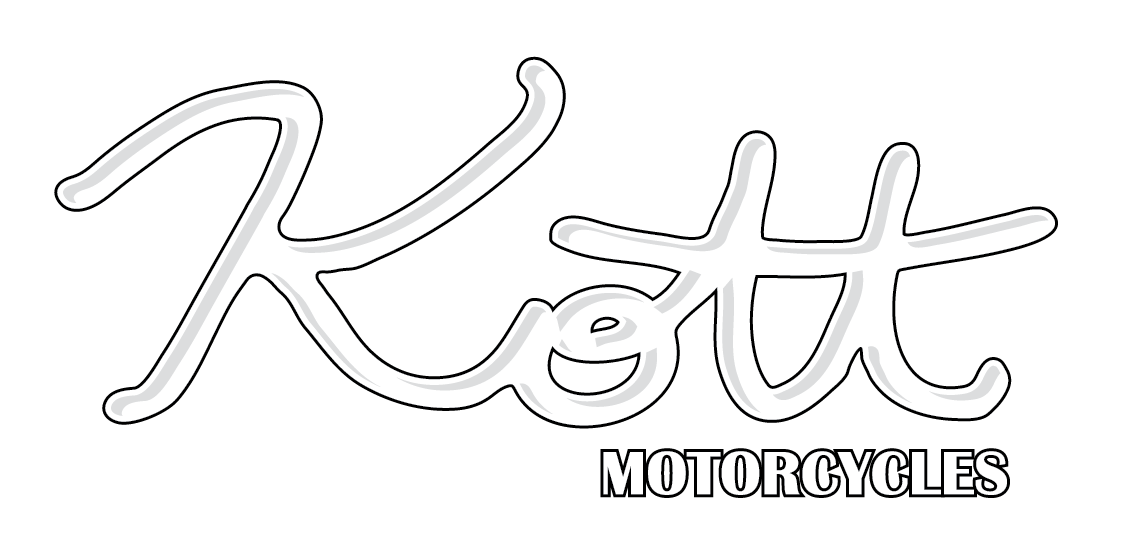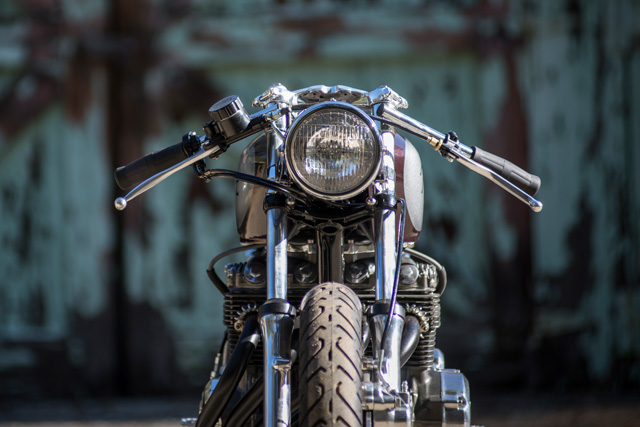This bike was featured on BikeEXIF.com (Click here to view)
From his home base in California, Dustin Kott’s earned a reputation for building café racers with exceptional proportions. So when Ryan Reynolds was looking to add another bike to his already enviable collection, Dustin got the call.
The star of the upcoming Deadpool movie is an avid motorcyclist, with a taste for classically-styled machines. (His collection includes numbers from Deus and Raccia Motorcycles). Now he was looking to transform a 2014-model, fuel-injected Triumph Thruxton.
It’s not a make or model we’re used to seeing from Kott Motorcycles, but that didn’t deter Dustin. “The end goal was to transform the linear and aesthetic proportions of the machine to accommodate Ryan’s special requests,” he says, “and to reveal exactly what lay dormant within the modern Thruxton’s unrealized potential.”
Dustin’s first step was to ride the Thruxton to get a feel for the stock machine. “After the first ride the idea was not so much to fix the machine,” he explains, “but rather enhance the ride to allow the rider to feel more engaged, more required, and maybe slightly less docile.”
The biggest issue, in Dustin’s mind, was the lack of of a cohesive line from the Thruxton’s steering stem to its tail—particularly the frame’s drop from the tank to the seat. So he set about modifying the frame to perfect its linear flow—adding some neat perforated steel panels in the process.
As a side effect, Dustin now had space to stash away the Thruxton’s wiring harness, ECU, fuse box, fuel injection module and downsized lithium battery. Which then highlighted the next challenge: the Thruxton’s in-tank fuel pump.
Dustin wanted to fit a vintage Japanese tank to the Triumph, and settled on a late model Yamaha XS1100 unit. “Some may feel that fitting a Japanese tank to a British motorcycle is the final insult. But our thinking was that of dimensional and aesthetic liberty.
“It allowed for a taller tank-height-to-triple-clamp ratio, which always gives the impression of desirable fullness.”
Luckily the XS tank had enough internal space to retrofit the Triumph’s fuel pump inside. Plus, the vacant space between the frame’s backbone and the tank’s tunnel turned out to be a great place to stick the ignition switch.
To finish off the bodywork, Dustin fabricated one of his signature, round bar constructed tail units. Any electrical components that hadn’t already found a home were relocated to under the cowl, and a discreet LED taillight installed.
The focus then shifted to the bike’s handling. Keeping things British, Dustin fitted a pair of high-performance Hagon shocks and Avon tires. He then designed new rearset plates around the Thruxton’s frame down tubes, improving the riding position in the process. Up front, clip-ons were an obvious choice, paired with the original controls.
To wring the maximum performance out of the Triumph twin, the EFI was remapped and the stock exhaust system swapped for a stainless steel Arrow two-into-one system. “It sounds absolutely brutal at speed,” says Dustin. The airbox also gave way to velocity stacks.
Dustin’s handiwork is evident throughout the build—from the subtle inner rear fender to the custom-made exhaust and engine mounts.
When it came to finishing options, Dustin wanted to stick with a factory Thruxton vibe, “while redefining the overall stance and ride-ability.” To match the brushed metal casings, the majority of new components were given a brushed nickel or aluminum appearance.
There’s brandy-wine paint on the tank and tail, enhanced with pewter gold pinstriping. And reddish brown leather covering over the seat foam. All beautifully done.
One little detail is missing, though: the speedo. Instead, painted in a neat script onto the headlight bucket, are the immortal words ‘Live Fast’. It’s a typically neat and sympathetic touch from Kott, and sums up the spirit of traditional café racers.
Looks like Mr Reynolds has a knack for choosing builders as well as scripts.
































































































































































